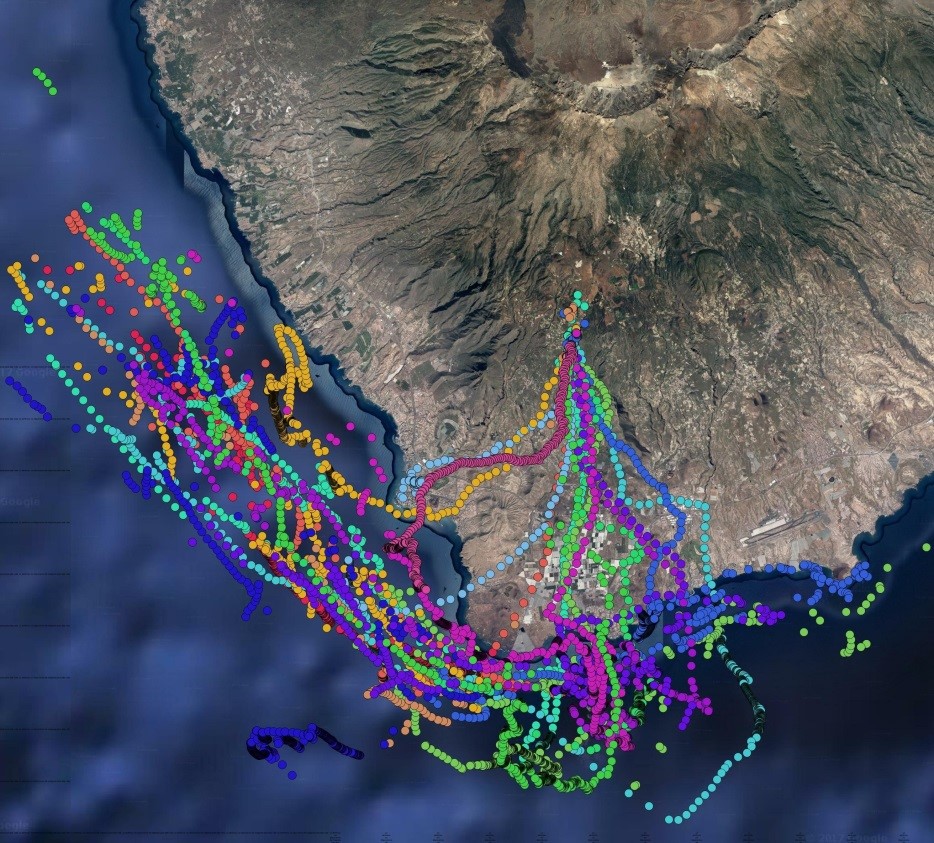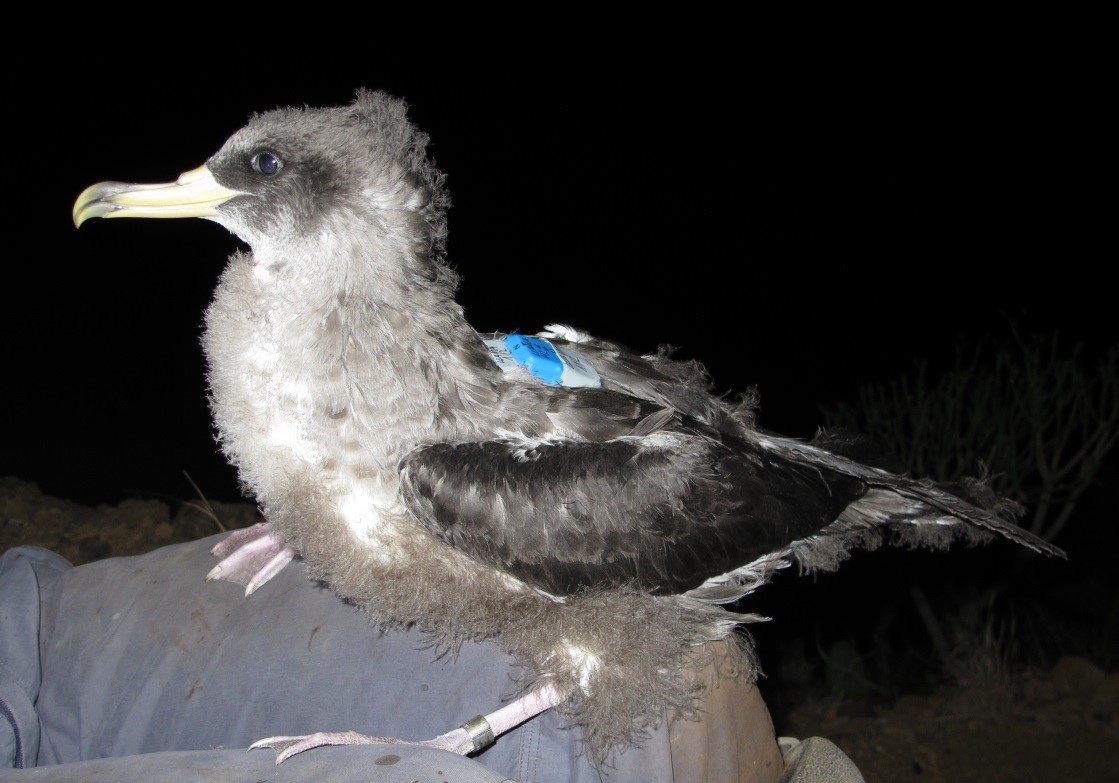¡ The LuMinAves project in which the Doñana Biological Station (EBD-CSIC) participates has collected data to manage the seabird mortality induced by artificial lights, an important phenomenon affecting seabird conservation in the world
¡ With the use of GPS devices and satellite images, the researchers could monitor for the first time the night flights of Cory's shearwaters, when they leave their nests and fly towards the sea
A study published in the journal Frontiers in Ecology and Evolution has monitored the flights of Cory's shearwater, seriously affected by light pollution. It is the first step to reducing the high mortality of 70 bird species due to this phenomenon. The research, result of a conservation project in the Macaronesia archipelago (INTERREG MAC LuMinAves), has been carried out by researchers from the Doñana Biological Station (EBD-CSIC), the Autonomous University of Madrid (UAM), the Ornithology and Canary Island Natural History group (GOHNIC) and SEO/Birdlife. This study provides data and knowledge based on evidence to manage the seabird mortality induced by artificial lights.
The researchers used GPS transmitters with remote data download and attached them to the mid-dorsal feathers of birds. The aim was monitoring the night flights of Cory's shearwaters, when they leave for the first time their nests and fly towards the sea.
"The GPS transmitters were programmed to record a position every 30 seconds so that we could know precisely where the birds were flying", explain the authors of the study. The GPS devices with remote data download provide information on birds reaching the ocean, which is a substantial improvement over previous studies that required recapturing individuals to retrieve data from the tracking device.
"We could find that the 14% of the birds were blinded by the light and landed on high light level areas. The remaining 86% successfully reached the ocean, but they overflew coastal urban so light-polluted as the places where the 14% accidentally landed. This information tells us that they were also at high risk", say the researchers.
"The probability of an individual landing -they add- increased with the tortuosity of their flights and the overflown light pollution levels. The areas with more emergency landings were highly urbanized and light-polluted areas. In addition, birds with slower and more tortuous flights were more likely to land than the birds with faster and more direct flights.
Most birds were rescued during the first 24 h after grounding, but some of them were rescued up to 5 days after their experimental release., which is critical to their survival. "The longer they stay on the ground, the greater the probability of dying from predation by cats or dogs, from being run over or, simply from starvation and dehydration", they emphasize.

A growing phenomenon
Light pollution – alteration of natural light levels by artificial light introduction, increases annually. This type of pollution has significant impacts on biodiversity since most living beings have evolved under a predictable regime of light and dark cycles (day and night).
From a conservative point of view, one of the most severe consequences of light pollution is the attraction of seabirds to illuminated areas, which causes high mortality among these birds. This phenomenon mainly affects young fledglings during their first flights from their nests towards the sea, which they always do at night.
Rescue campaigns are organized every year to reduce this mortality. Citizen's collaboration is requested to rescue the birds that could not reach the sea and fall on land. Thanks to these campaigns, around 90 % of these birds are released once again to the ocean.
Despite affecting more than 70 seabird species (some of them critically endangered), disorientation of seabirds due to artificial lights is a poorly known phenomenon, largely because of the challenge to track seabirds at night. Visual tracking is impossible but, as the present article shows, the new technologies could now investigate this problem.
Reference
Rodríguez, A., Rodríguez, B., Acosta, Y., Negro, J. J. 2022. Tracking flights to investigate seabird mortality induced by artificial lights. Frontiers in Ecology and Evolution. DOI: 10.3389/FEVO.2021.786557 https://www.frontiersin.org/articles/10.3389/fevo.2021.786557/full
https://www.frontiersin.org/articles/10.3389/fevo.2021.786557/full








 ¡Abierta convocatoria para proyectos de investigación en la ICTS- Doñana!
¡Abierta convocatoria para proyectos de investigación en la ICTS- Doñana!


